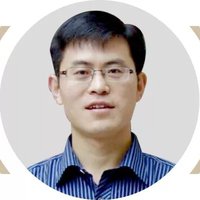From fire for food to nuclear plants for power,
human beings have used heat for tens of thousands of years. However, we still
do not know how to control or manipulate heat to create desired and on-demand current
flow, just like what we do for electrons. That is because, heat is carried by a
broad spectrum of vibrational modes, which are bundles of energy that have no
mass or charge and therefore cannot be controlled by an electromagnetic field.
If functional thermal components analogous to electronic diodes and switches
can be designed or discovered, it will have a profound impact on thermal
engineering and energy utilization.
Zhiting Tian turned to polymers for the
answer, a kind of material that is new to this research field. Because of
their low-cost, light-weight, pliable, and
chemical stable properties, polymers play essential and ubiquitous roles in everyday
life. But in terms of thermal properties, they are generally considered thermal insulators with limited thermal applications.
Tian challenged this conventional thinking
and found out that polymers can be turned into tunable thermal materials.
Polymers are complex, posing significant challenges on the fundamental
understanding of their properties; meanwhile, the structural complexity also
offers new opportunities, as there are more tuning knobs to achieve
otherwise-unattainable thermal properties in inorganic solids. Tian discovered
two intriguing phenomena in polymers: thermal rectification in asymmetric
polymers and thermal switching in thermoresponsive polymers, which could lead
to organic thermal diodes and switches for functional thermal devices and
efficient thermal management. For the thermal diodes, Tian discovered an
unusual thermal rectification effect in an asymmetric polymer molecule, a fundamentally
new and promising effect that allows for significantly high thermal
rectification. For the thermal switches, she demonstrated fast thermal
switching using higher-order phase transition for the first time. Rectifiers
and switches are the basic building blocks of functional thermal devices. Her
research has great potential to fundamentally transform dynamic space
insulation and building envelopes, switchable thermal storage, smart textiles,
and thermal computing.
When asked about the future of thermal
energy, Tian said: “Maybe one day, we can use heat carriers for communication. Both
electrons and photons are already used for this purpose, then why not phonons?”




